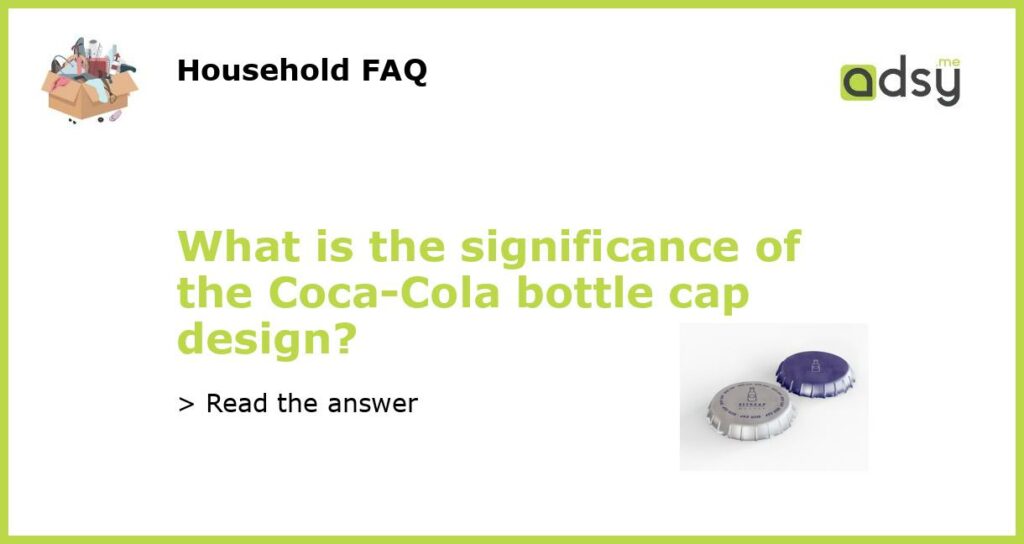The History of Coca-Cola Bottles and Caps
Coca-Cola was created by pharmacist John Pemberton in 1886 and soon became one of the most popular soft drinks. In the early years, Coca-Cola was sold in glass bottles with a straight-sided design, but in 1915, the now iconic contour bottle design was patented. The design was meant to distinguish Coca-Cola from imitators and make it more recognizable to consumers.
While the contour bottle design is certainly the most recognizable aspect of Coca-Cola packaging, the bottle cap design is also an important part of the brand’s identity. The first Coca-Cola bottle caps were made of cork, but by 1894, they were replaced with metal caps that featured the Coca-Cola logo. Over the years, the cap design has changed multiple times, reflecting changing trends in design and advertising.
The Evolution of the Coca-Cola Bottle Cap Design
In the early years, Coca-Cola bottle caps were relatively simple, featuring just the Coca-Cola logo. But as advertising and packaging trends evolved, so did the cap design. In the 1940s and 1950s, for example, Coca-Cola bottle caps featured playful graphics, such as images of Santa Claus and cartoon characters like Mickey Mouse. In the 1970s, the bottle cap design was updated again, reflecting a more modern, minimalist aesthetic.
Today, Coca-Cola bottle caps still feature the iconic Coca-Cola logo, but often integrate modern design trends as well. In 2013, for example, Coca-Cola introduced a line of bottle caps that featured graphics made by street artists. The company also released a line of bottle caps that featured music lyrics, reinforcing the brand’s connection to popular culture.
The Significance of the Coca-Cola Bottle Cap Design
For Coca-Cola, the bottle cap design is more than just a functional aspect of packaging. It’s an important part of the brand’s identity and marketing strategy. By updating the cap design over the years, Coca-Cola has been able to keep the brand fresh and relevant to changing consumer tastes. And by incorporating elements like pop culture references and modern design trends, Coca-Cola has been able to connect with new generations of consumers while also maintaining its nostalgic appeal.
In addition, the Coca-Cola bottle cap design has become a recognizable symbol around the world. Even in places where Coca-Cola is not widely available, the bottle cap design is still recognizable as a symbol of American culture and globalization. For Coca-Cola, this helps reinforce the brand’s global reach and influence.
The Future of the Coca-Cola Bottle Cap Design
As Coca-Cola continues to evolve and adapt to changing consumer preferences, the bottle cap design will likely continue to evolve as well. In recent years, for example, Coca-Cola has placed increasing emphasis on sustainability, and the company has introduced a line of eco-friendly PlantBottle packaging, which is made from plant-based materials. It’s possible that the bottle cap design may be updated to reflect this emphasis on sustainability, or to incorporate new technologies like augmented reality or QR codes.
The Bottom Line
The Coca-Cola bottle cap design is an important part of the brand’s identity and marketing strategy. Over the years, the design has evolved to keep up with changing trends in advertising and packaging, while still maintaining the nostalgic appeal that makes Coca-Cola such an iconic brand. Whether you’re a fan of Coca-Cola or not, there’s no denying that the bottle cap design has become an important symbol of American culture and globalization.






